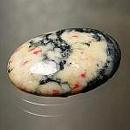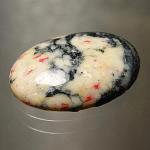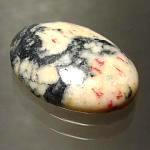|
|
||||||||||||||||
|
||||||||||||||||
|
||||||
|
|
|
|
Myrickite
(a
mixture
of minerals) |
|
| | |
| Discovered in 1911; IMA status: Not Valid (a mixture of minerals) | ||
|
| ||
|
Occurances |
|
|
|
|
|
Type Locality: |
Possibly Myrick Spring, San Bernardino County, California, USA |
|
Year Discovered: |
Around 1911 |
|
View mineral photos: | |
|
|
|
|
More Information |
|
|
|
|
|
|
Mindat.org
(Myrickite) |
|
|
|
|
Myrickite
has also been found at other locations in California.
During the early 1950s,
Myrickite was found in small quantities at the Manhattan Mine, Napa County.
Other occurances of Myrickite in California are:
Death Valley, Inyo County; Soledad Mountain, Mojave
District, Kern County; Lead Pipe Springs, San Bernardino
County; Riconada Mine, San Louis Obispo County; and
the Tilton Ranch, Santa Clara County. There are also
occurances at these locations outside of California:
at several locations in the Mazatzal Mountains, Gila
and Maricopa Counties, Arizona; the Yellow Pine District,
Valley County, Idaho; Beatty, Nye County, Nevada; and
Morton District, Lewis County, Washington. |
|
|
|||||||||||||||||||||||||||


